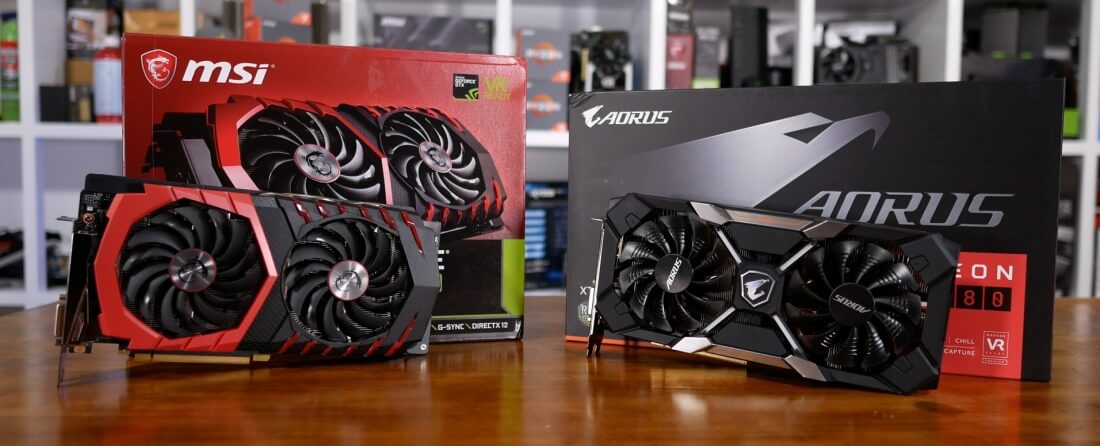Many of you looking to spend $230-$280 on a new graphics card have asked whether that money would be better off going toward a Radeon RX 580 or GeForce GTX 1060. Hoping to answer that question, we're back with multiple versions of both cards in-hand along with the results from 27 PC game benchmarks ran at 1080p and 1440p.
The exact models used for testing included the EVGA GTX 1060 FTW+ and MSI GTX 1060 Gaming X+ as well as the MSI RX 480 Gaming X 8G and Aorus RX 580 Xtreme Edition.
Of note, the EVGA FTW+ is aggressively clocked from the factory, featuring a base clock of 1632MHz, while the MSI Gaming X+ comes clocked at 1569MHz, potentially making it 4% slower. However, MSI's GTX 1060 features 9Gbps GDDR5 memory that is clocked 12% higher, so it'll be interesting to see what kind of difference that makes when comparing the cards.
In total, we ran more than 600 benchmarks and we'll be looking at over 430 individual results. We performed all testing with a Kaby Lake Core i7-7700K machine overclocked to 4.9GHz, though I'm sure plenty of you will be asking for Ryzen results so that's also in the works at some point soon.
For now, let's check out the numbers we've gathered thus far...
Test System Specs & Memory
- Intel Core i7-7700K (4.5 GHz)
- Asrock Z270 Extreme4
- 32GB DDR4-3200 RAM
- Samsung SSD 850 Evo 2TB
- MSI GTX 1060 Gaming X+
- EVGA GTX 1060 FTW+
- Aorus RX 580 Xtreme Edition
- MSI RX 480 Gaming X 8G
- Windows 10 Pro 64-bit
- GeForce Game Ready Driver 381.89
- Crimson ReLive Edition 17.4.4

Previously we saw that the RX 480 system consumed around 10% more power than the same machine configured with the GTX 1060. Here we see an 11% increase.
That figure jumps a further 10% when looking at the RX 580 total system consumption of 344 watts, making the Aorus RX 580's total system consumption is 22% higher than the EVGA FTW+.
For a system running a 7700K @ 4.9GHz, the RX 580 hardly seems power hungry with a peak total consumption still well under 400 watts, though the GTX 1060 is clearly the better option here for anyone seeking maximum efficiency.
Benchmark time
GTA V, The Witcher, Tomb Raider, AotS
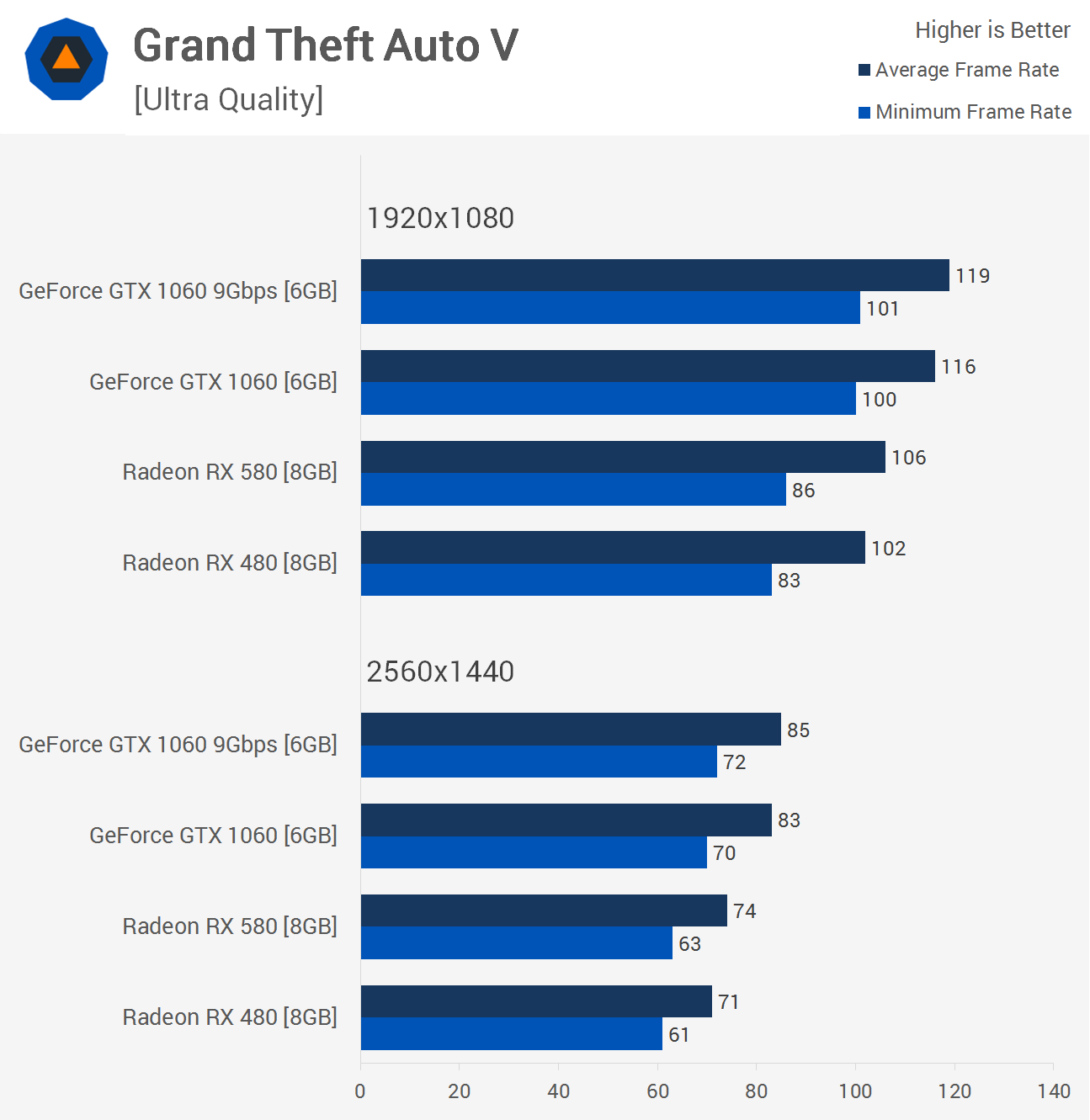
Starting things off we have the oldest game in this write-up and as you can see it appears to favor the green team. Looking at the 1440p results we see that the GTX 1060 was 17% faster than the RX 480, while the new RX 580 boosted AMD's performance here by just 4% – still 14% slower than the original GTX 1060.
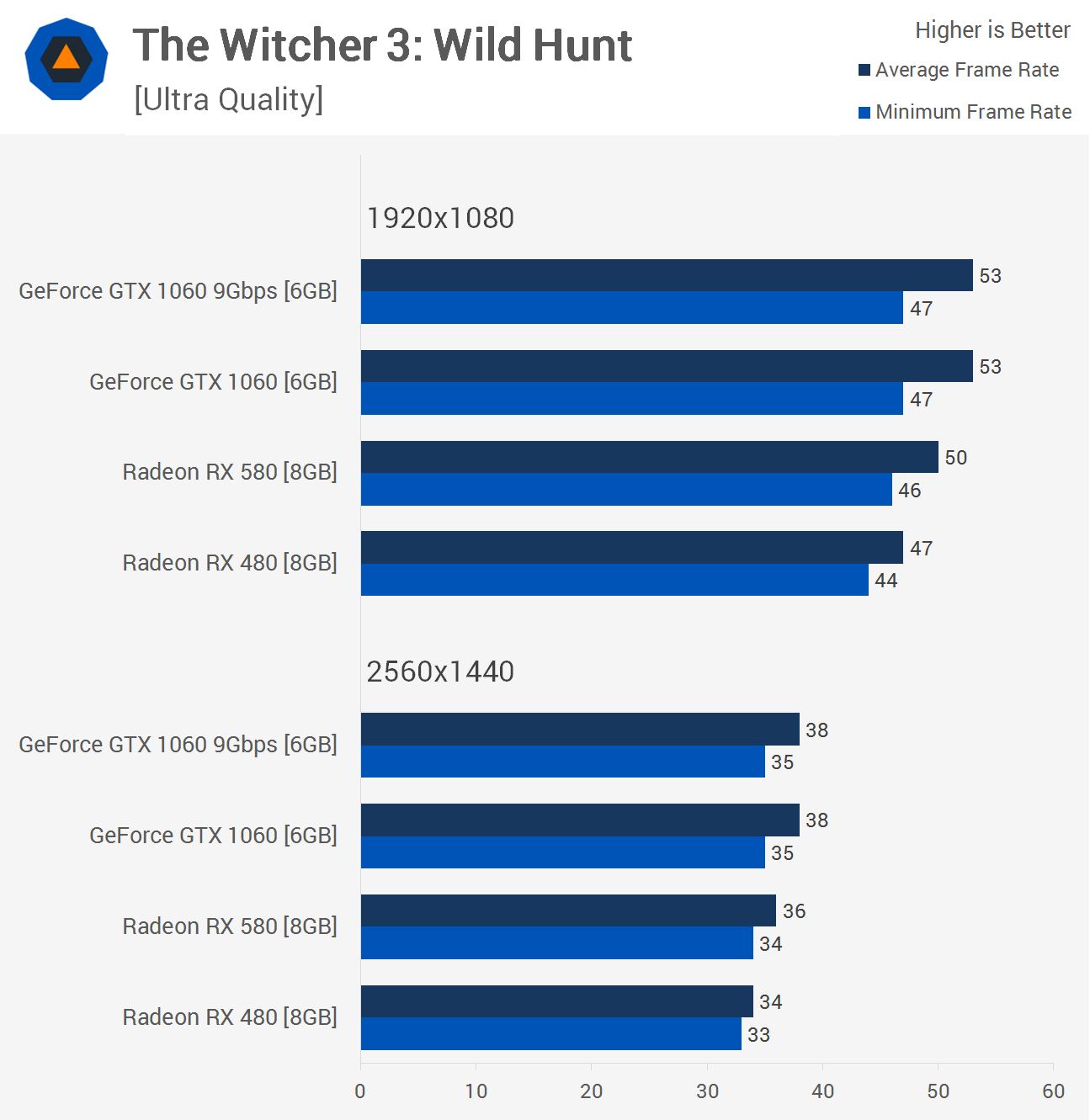
This is another title where the green team has a slight advantage and yes we did test with HairWorks enabled which does give Nvidia an edge – not enough for you to protest in the comments I hope but somehow there are probably already a few there as I write ;).
As you can see, the RX 580 was 6% faster than the RX 480, which meant it was still 6% slower than the GTX 1060s, both of which delivered the same 53fps average.
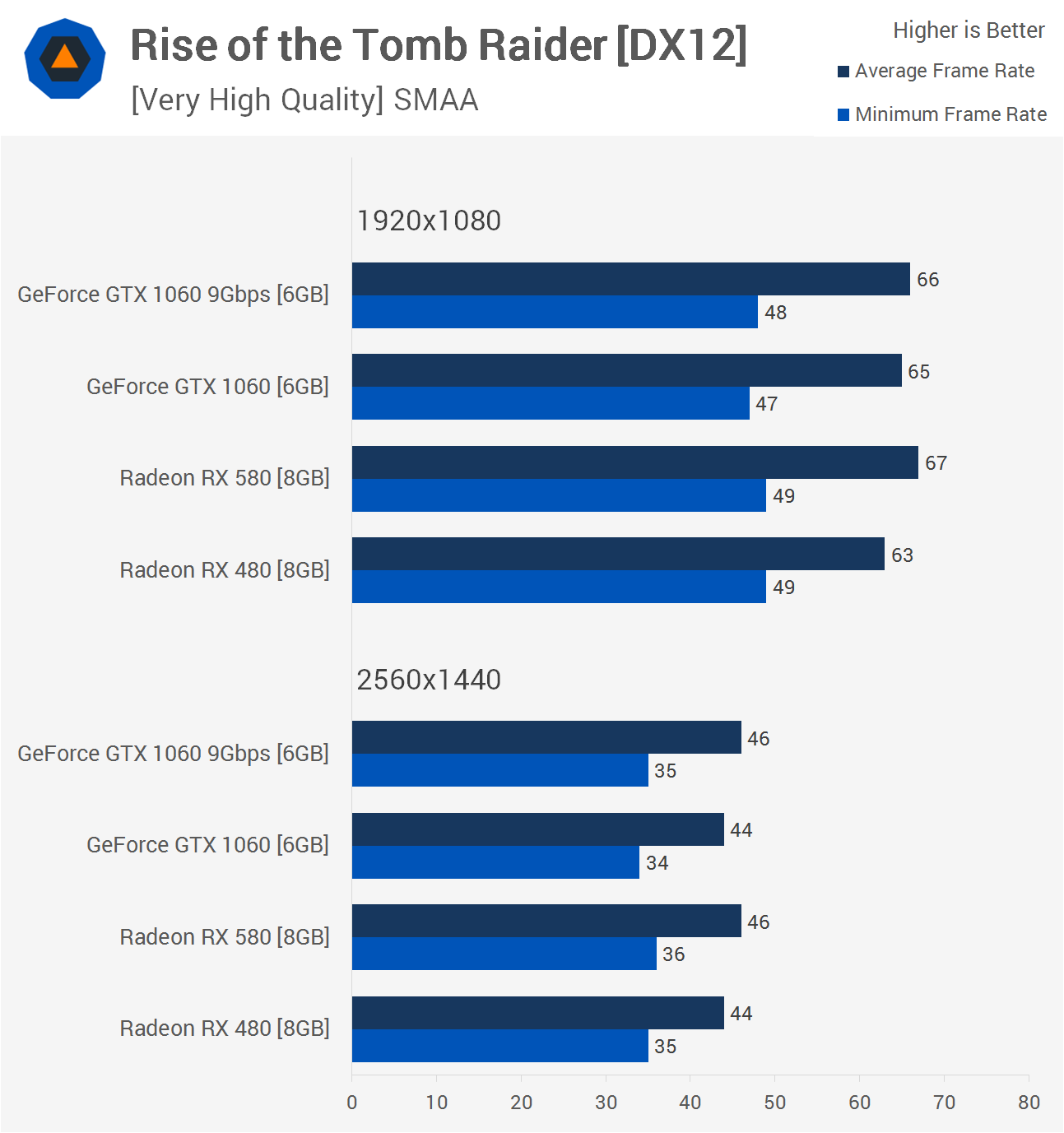
We can't be too far away from another Tomb Raider game either, rumor has it the game is being developed entirely while traveling on public transport and Crytek is likely to follow suit for the development of Crysis 4.
We know that Rise of the Tomb Raider was developed in conjunction with the green team, but over time AMD has been able to optimize their hardware for this title quite well. As a result the RX 480 is now just a few frames behind the GTX 1060 while the RX 580 is able to match the new high-speed memory version.
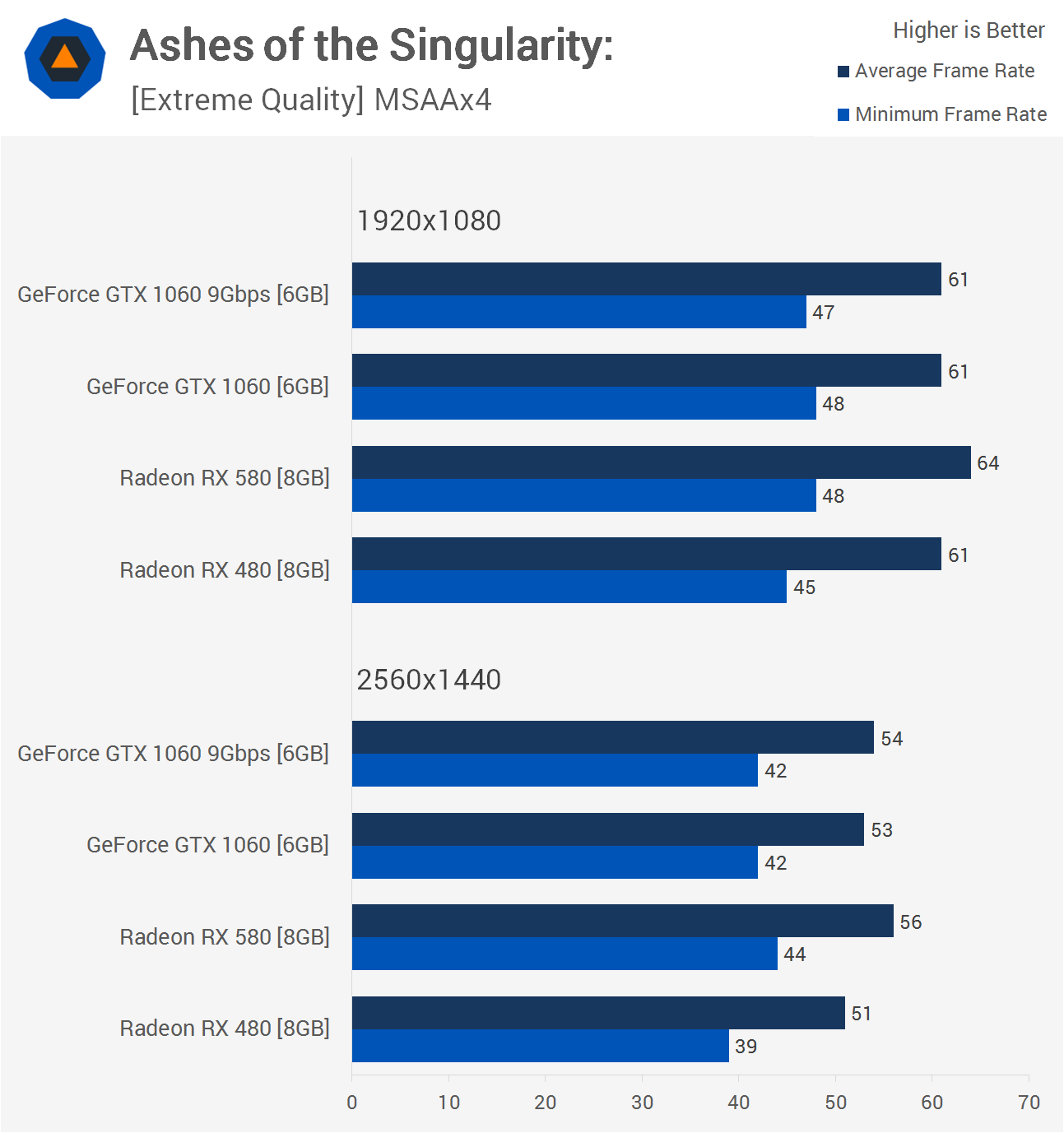
There are more people currently playing Command and Conquer: Red Alert 3 on Steam than there are Ashes of the Singularity, which is probably why the game has earned the title "Ashes of the Benchmark." There might very well be more people benchmarking the game right now than actually playing it.
Nonetheless, in my opinion the game is one of the best examples we have of a well-assembled DX12 title, though it is much more useful for testing CPUs than it is GPUs. The RX 580 enjoys a slight performance advantage over the GTX 1060, but for a DX12 title the margins are hardly significant.

